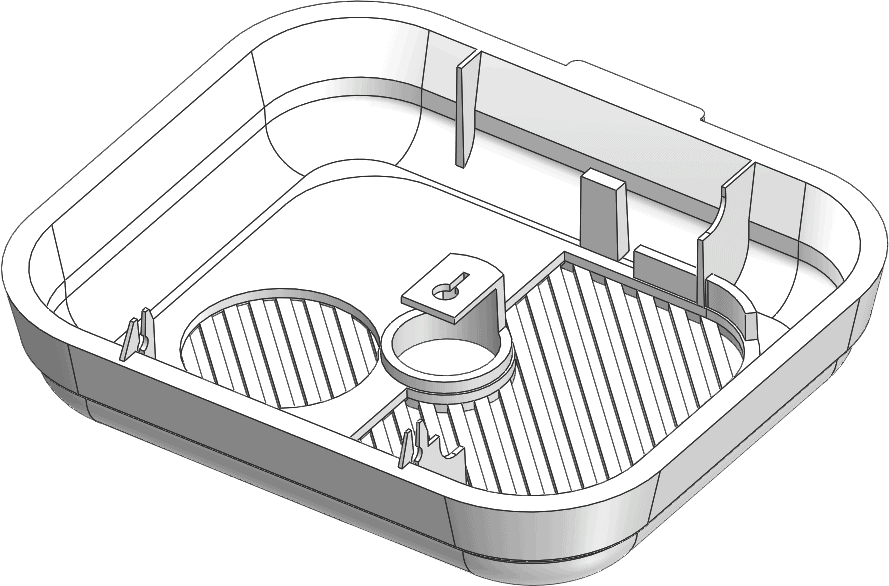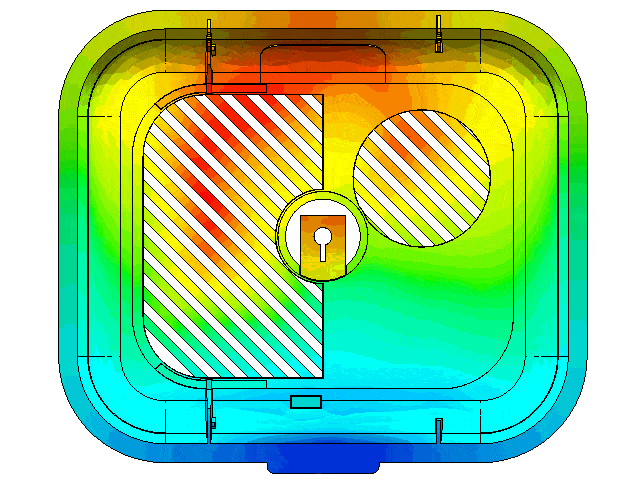Reduce Mold Rework With SIMULATION Plastics
A common problem engineers and designers face when creating injection molded parts is, will the design be able to be molded? Something I have witnessed is engineers and designers are already validating their design structurally with SOLIDWORKS Simulation, but unintentionally ignoring whether or not the parts can be manufactured.
In this case study we will look at 3 versions of the same part. All versions are structurally valid, however may have issues being manufactured. Often times the mold is cut and the fill of the part cavity has an issue. The part short shots (fails to fill the mold cavity), or racetracks (fills too fast along the perimeter and back fills) among other issues. These problems lead to costly rework not only from the mold side, but now the design changes need to be understood and retested from the structural side as well. What if we could test the injection process virtually helping alleviate design changes at the manufacturing stage.
SOLIDWORKS Plastics is a product that solves the problem above and helps eliminate rework. SOLIDWORKS Plastics is a manufacturability analysis software that gives the product engineer/designer, mold makers, and mold shops an understanding of how the part cavity will fill, pack, warp and cool all within the SOLIDWORKS interface.
Let’s look at the example below and verify that the basic need of properly filling the mold cavity can take place. The smoke detector upper housing has an initial design with a thick perimeter wall and relatively thin cross section every where else. Structurally the housing performs as expected but before sending the design to the mold maker we need to understand that the cavity can fill, and has no issues.

The injection location is located on the exterior tab’s edge. Within the thick walls the injection of the plastic speeds up “race tracking” around the perimeter. This leads the center section of the cavity to fall behind the flow front and eventually meet in the middle of the ribs. Any area that the flow front reconnects knit lines appear and can cause structural issues as well as cosmetic ones.

From this knowledge a decision was made to reduce the wall thickness and add stiffening ribs to meet the structural needs. Plastics quickly shows that the decision to reduce the wall size although structurally sound was incorrect with regards to the injection. The walls are now too thin and lead to a short shot.


Choosing a wall thickness in between the previous thick and thin versions shows that with the ribs the structural integrity was maintained. This new wall thickness value also allowed for optimal manufacturability keeping a consistent flow front through out the injection.


Utilizing SOLIDWORKS Simulation and Plastics allowed for the design to be optimized structurally and for manufacture. Plastics helps eliminate costly mold rework by providing insight into the manufacture of the part. Plastics provides information upfront helping make design decisions before the mold is ever cut. If you have any questions or wish to see more regarding Plastics or Simulation please contact 3DVision Technologies. We strive to help make our customers Better, Faster, and Smarter with our solutions.

 Blog
Blog